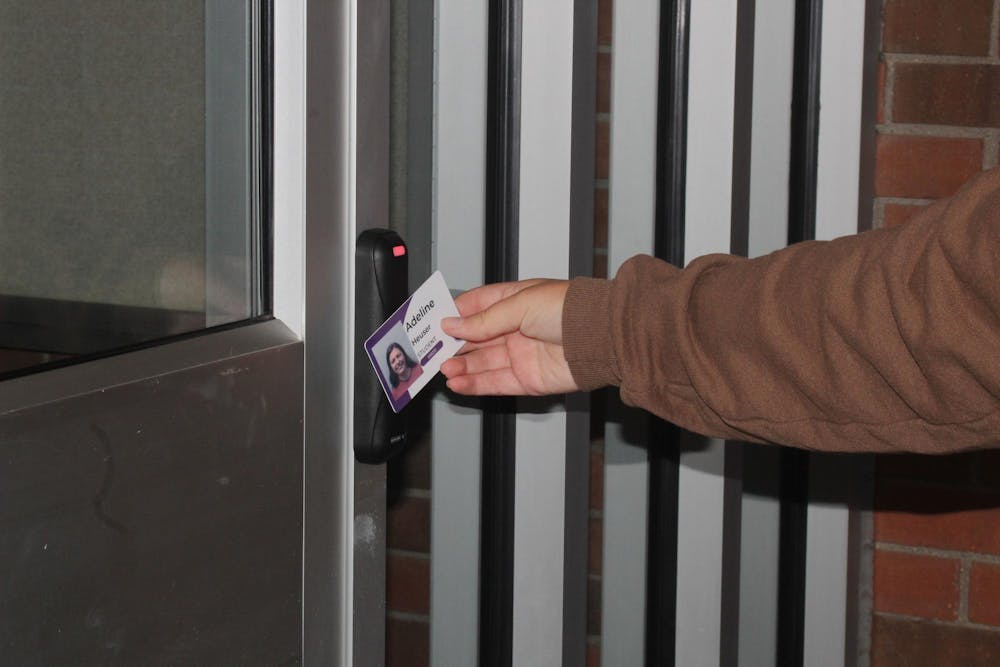Taylor University transitioned to smartcards, keeping students safe one tap at a time.
In the past, students swiped their ID cards to gain access into academic buildings, athletic buildings and residence halls. With constant advancements in technology, the university decided to update its system.
The university slowly began updating to magnetic taps and now has 220 to 230 card readers on campus.
“The cards are encrypted, it’s more secure,” Steve Elwood, director of infrastructure and support said.
Both swipe cards and smartcards are able to track a student's name, location and time of entrance. The only difference is that smartcards contain a computerized chip — swipe cards do not.
The computerized chips make reprogramming easier and quicker.
Taylor’s faculty wanted to ensure that people intended to be in certain buildings are the only ones who can get in. Faculty said they felt that Taylor was isolated enough that crime in surrounding areas wouldn’t directly affect the campus.
However, Elwood said that they would rather be safe beforehand — to be reliable and dependable — than scramble to figure out what to do if security measures failed. Hence, they decided to make the update and protect against any possible threat.
Smartcards not only reinforce safety measures but also serve as a quicker way to get into buildings.
“My favorite part of the project is saving time for people all over campus,” Elwood said. “The new smartcards are superior in, I would say, just about every way from the old magnetic cards.”
When people had their hands full, it was often a hassle to swipe a card. Now, individuals have the luxury of an easy entrance.
“I think it’s more convenient, especially when people are moving in or out of the halls,” MacKenzie Bedor, residence hall director, said.
Elwood advised against leaving cards in the back of a phone case when using a wireless charger. There is a significant amount of electricity passing through the card which can lead to the chip being damaged.
“It’s really important that we take care of things that are given to us,” Bedor said. “It’s also respectful to all the work people have put into the project.”
The transition to smartcards was a good first step in the right direction to make campus more secure, Bedor said. With this new transition, future progression for Taylor University could possibly move to an all-electronic usage. Phones could become the new cards allowing students access into campus buildings.
Tap and go is here now to increase the safety of Taylor’s students.





